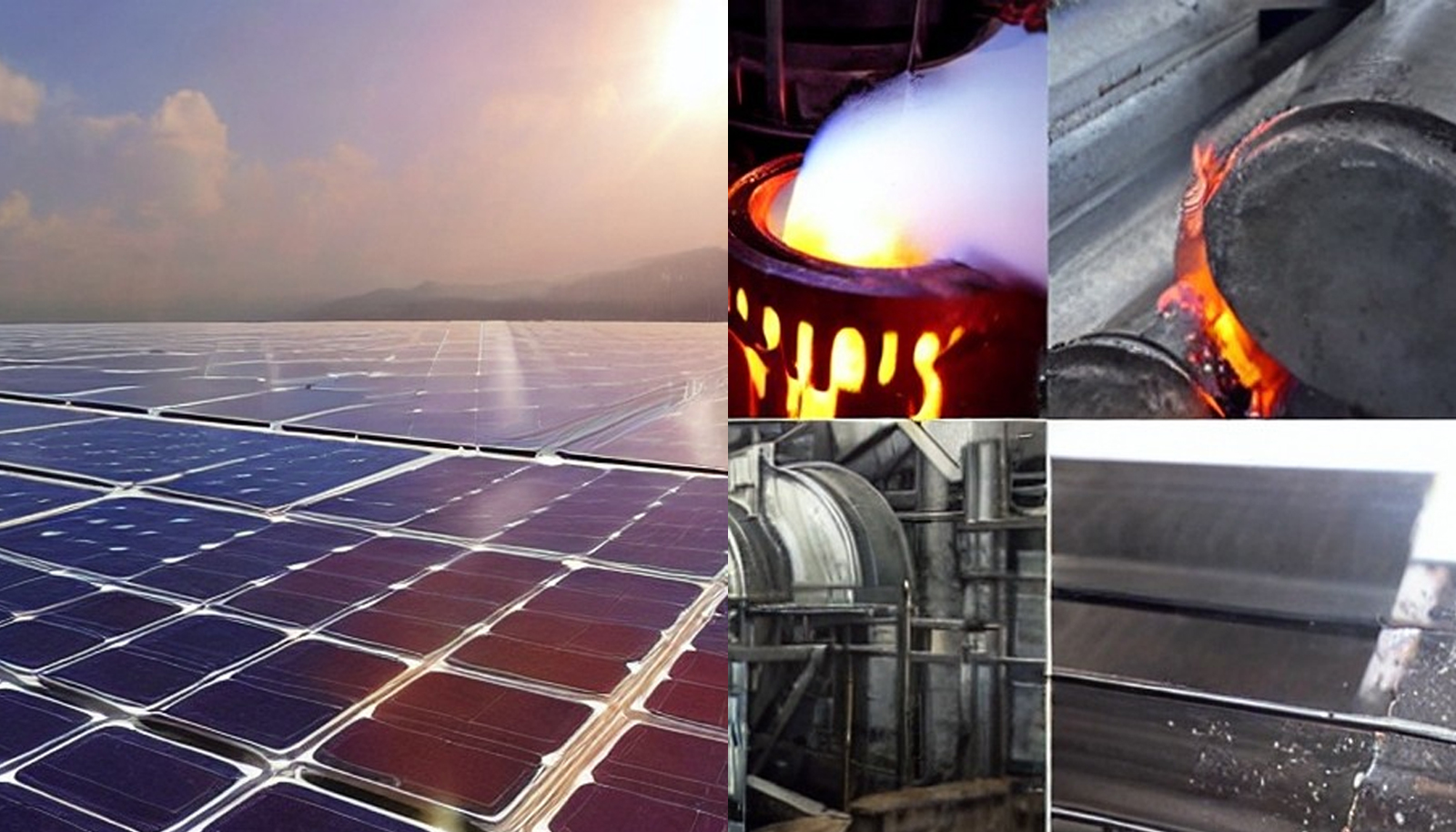One of the innovative approaches that has emerged worldwide is the utilization of solar energy in the steel melting process. Typically, fossil fuels or electricity are used for steel melting, resulting in the emission of harmful gases (CO2, SO2) and pollution. The new technology employs concentrated solar radiation to heat the metal, eliminating the need for fossil fuels or electric power. This enables the production of high-quality molten metal while minimizing the negative environmental impact.
If we want to calculate the potential reduction in CO2 emissions in the steel melting process, we can use the following formula:
CO2_emission = m_steel * EF_fossil_fuel – m_steel * EF_solar
Where:
CO2_emission – CO2 emissions during steel melting (in kg)
m_steel – mass of steel being melted (in kg)
EF_fossil_fuel – CO2 emission factor for fossil fuels (in kg CO2/kg fuel)
EF_solar – CO2 emission factor for solar energy (in kg CO2/kg energy)
This formula allows for the comparison of CO2 emissions when using fossil fuels and solar energy in the steel melting process. If the result is negative, it means that the use of solar steel melting results in a negative CO2 emission, which is highly favorable for environmental protection.
Furthermore, we can analyze the efficiency of the solar furnace for steel melting using the following formula:
Efficiency = (Output power / Input power) * 100
Where:
Efficiency – efficiency of the solar furnace for steel melting (in %)
Output power – power obtained from steel melting (in W)
Input power – solar radiation power used for heating the metal (in W)
This formula allows us to quantify how effectively we utilize solar energy in the steel melting process and compare it to other melting methods. The higher the efficiency value, the more efficient the utilization of solar energy.
There is a planned significant increase in the melting of steel and titanium, up to 8 times, in the next 3 years. If this is achieved according to the plan, it will result in reduced pollution, energy costs, and at the same time, new opportunities will be created for the development of a sustainable metal industry.
To illustrate the planned significant increase in steel and titanium melting capacity, we can employ a mathematical calculation to estimate the capacity growth.
Let T_2023 represent the initial steel and titanium melting capacity in 2023, and T_2026 denote the planned melting capacity in 2026. Let’s assume that the planned increase is expressed by a growth factor k, which is equal to 8 (8 times the capacity).
T_2026 = T_2023 * k
This can be mathematically represented as:
T_2026 = T_2023 * 8
This formula demonstrates that the steel and titanium melting capacity is expected to be eight times higher in 2026 compared to the capacity in 2023.
Furthermore, if the planned increase is implemented as scheduled, a reduction in pollution and energy costs is expected. The specific calculations for these reductions depend on the specific parameters of the processes and technologies utilized in the metal industry. For instance, it is possible to calculate the decrease in CO2 emissions or the reduction in electricity consumption compared to traditional steel melting methods.
To illustrate the reduction in CO2 emissions and electricity consumption compared to traditional steel melting methods, we can perform several calculations. Let’s assume that the traditional method uses fossil fuels and has a certain CO2 emission and electricity consumption.
- Calculation of CO2 emission reduction: Assuming the traditional steel melting method emits 1 ton of CO2 per ton of molten metal. If we use the innovative approach of solar steel melting, let’s assume there is no CO2 emission.
CO2_emission_reduction = CO2_emission_traditional – CO2_emission_solar
- Calculation of electricity consumption reduction: Assuming the traditional steel melting method consumes 500 kWh of electricity per ton of molten metal. If we use the innovative approach of solar steel melting, let’s assume there is no electricity consumption.
Electricity_consumption_reduction = Electricity_consumption_traditional – Electricity_consumption_solar
Furthermore, the planned increase in steel and titanium melting presents new opportunities for the development of a sustainable metal industry, which can be expressed through economic analysis such as revenue growth assessment, job creation, or the establishment of new production lines.
By examining the advantages of using solar energy in the steel melting process, we come up with new ideas and directions for action. First and foremost, solar energy is a renewable energy source that is inexhaustible and non-polluting. In this way, we will eliminate dependence on fossil fuels, reduce emissions of harmful gases, and contribute to environmental preservation. It is important to note that solar energy enables high chemical purity in the melting process. The absence of fuel combustion eliminates exhaust gases and allows the production of high-quality metal for various purposes while ensuring rapid attainment of high temperatures, thereby improving process efficiency and productivity. Just like in any process, there are several challenges in using solar energy in the metal industry. The first and most significant one is the dependence on sunlight. The metal melting process requires a constant source of heat, which can be limited in the case of cloudy weather or during the night. However, advancements in solar radiation concentration technology and energy storage enable increasing reliability and continuity in the use of solar energy, as mentioned earlier. Overcoming one challenge opens up new ideas and contributes to various fields, not just the one being addressed.



